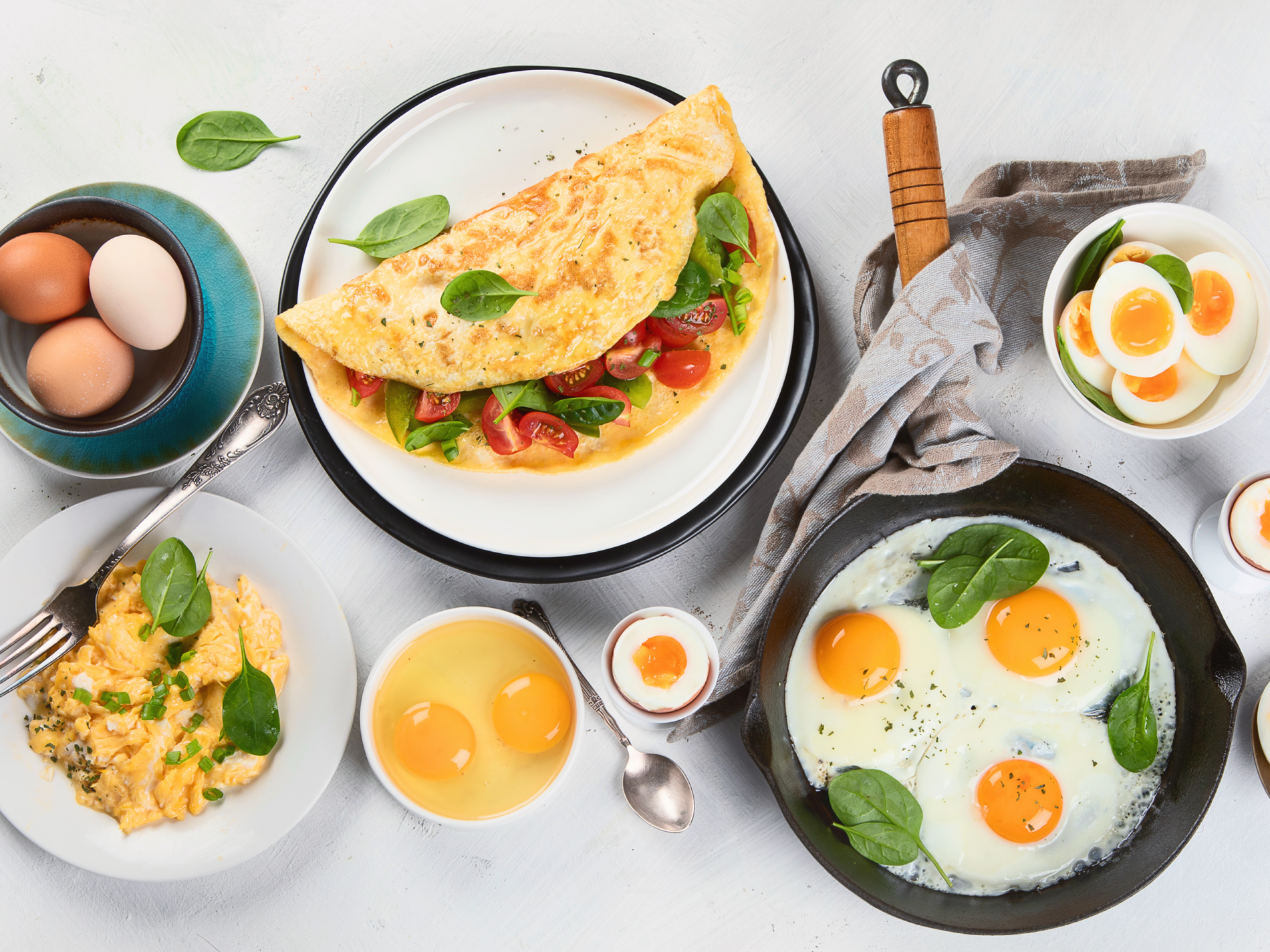In many countries, eggs are a staple for breakfast. Humans have consumed them since prehistoric times. As our ancestors observed animals’ behaviour, hunting for eggs and eating them raw was only natural.
Then with learning the use of fire, the creation of pottery and the domestication of birds cooking eggs became more common.
Today, it’s hard to imagine any cuisine without eggs.
The different types of eggs
Predictably, the most popular choice of eggs comes from hens. Duck, goose, quail and pheasant eggs are readily available too.
The colour of eggshells may vary from blue to white and brown. Some types are even covered in speckles. However, none of this affects the taste or the quality of an egg.
There are numerous ways of consuming eggs
Eggs are eaten on their own, in salads, soups and sauces. And they are used as an ingredient for glazing, binding substances and increasing the volume of baked goods.
They are usually sold in shells and come in carton boxes of 6 or 12. You can also buy beaten eggs in cartons or plastic bottles, frozen and even dried.
Eggs are consumed across the globe and variations of cooking eggs are also numerous. Eggs can be boiled, steamed, baked, fried and poached.
Some enjoy egg sandwiches. Others add a soft-boiled egg to a bowl of ramen. Or they are used for preparing scrambled eggs or omelettes, “sunny side up”, or poached with hollandaise sauce over a muffin.
These are common choices when it comes to breakfast in all Commonwealth countries. But these cooking methods are standard in many other places worldwide.
Of course, eggs are eaten at lunches and dinners too.
Let’s begin with a British recipe
For example, Brits often include Scotch eggs in picnic hampers. It’s a regional delicacy and many of you will not be familiar with it. So let’s try to make Scotch eggs using the following recipe.
Ingredients:
- 8 eggs
- 450 g / 2 cups of sausage meat (about 8 sausages)
- chives, finely chopped
- chopped parsley
- 1 tsp of grated nutmeg
- 1 tsp of English mustard
- salt and pepper
- 100 g / 0.8 cup of flour
- 2 fresh eggs, cracked and beaten
- 150 g / 1 cup of breadcrumbs
- 2 L / 8.5 cups of olive oil
Preparation:
- Put the eggs in a big pan and cover them with cold water.
- Let the water come to a boil and cook the eggs for 3-4 minutes.
- Immediately transfer them into icy cold water to stop the eggs from cooking.
- Crack the eggs a little to allow water to get inside the shells, loosening them for the ease of peeling.
- Let the eggs cool completely, then carefully peel them.
- Put the sausage meat in a bowl.
- Add the chives, parsley, nutmeg and mustard. Mix it well and season with salt and pepper.
- Prepare 3 bowls: one filled with flour, one with beaten eggs and one with breadcrumbs.
- Flatten one of the meatballs into a disc. Powder one of the peeled eggs with flour and place it in the middle of the disc. Enclose the egg inside the meat disc.
- Carefully cover the egg in flour from the first bowl. Then do the same in the second bowl with the egg mixture. Finally, dip it into the breadcrumbs from the third bowl.
- Repeat this with the rest of the eggs.
- Take a big pan and fill it with olive oil. Heat the oil to 150 °C / 300 F.
- Carefully transfer the eggs into the hot oil and cook for 4 minutes, turning them during the cooking. The crust will become golden brown, while the yolk inside should keep on the softer side.
- Once cooked, transfer eggs on a paper towel to remove excess fat.
You can eat Scotch eggs warm or cold. They go well with cheddar cheese and pickles.
Our second one is from the Far East
Another regional classic comes from Japan: tamagoyaki, an egg omelette. Often it is cooked, cut and served on top of longish rice balls, with some dried seaweed keeping rice and eggs together. For this omelette, the Japanese use a special rectangular frying pan. However, a round pan works too.
In a bowl, beat 3 eggs, add 30 g / 1 oz of water, 20 g / 0.7 oz of mirin (sweet sake) and 4 g / 0.1 oz of light soy sauce.
Preparation:
- On medium heat, warm some vegetable oil.
- Pour 1/4 of the egg mixture, tilting the pan to spread the mixture evenly.
- Once the egg mixture starts to set, roll it to the top side of the pan.
- This is followed by the second 1/4 of the mixture. Ensure the liquid gets under the first rolled layer already in the pan.
- Again, as soon as you see the layer starting to set, roll the omelette over to the top-side of the pan.
- Then repeat with the last two layers.
- Once this is done, transfer the omelette to a bamboo mat and roll it to enhance the rectangular shape of the dish.
- Cool the omelette, cut it into 1.5 cm / 0.5 pieces, and place over rice balls, forming nigiri.
Eggs are perfectly shaped protein powerhouses, and their versatility is endless.











What do you think?